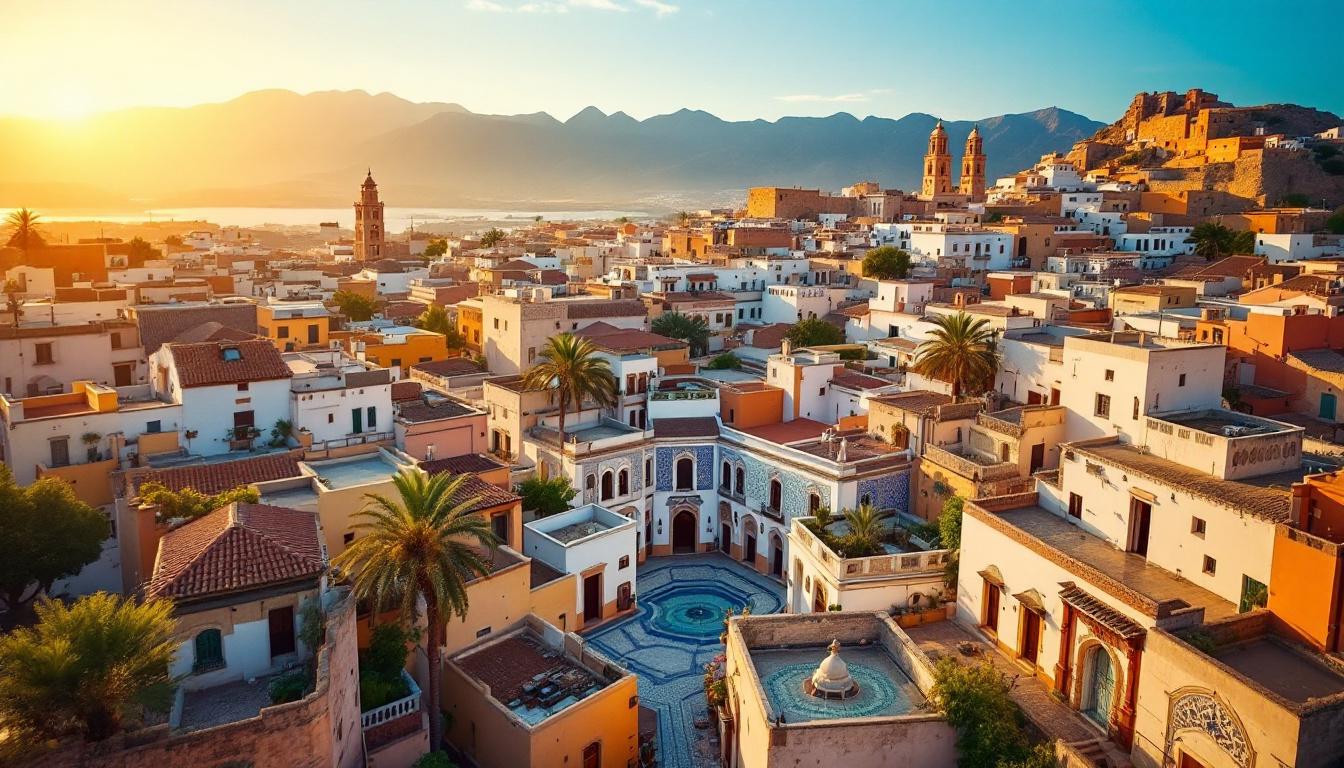When I first heard locals in northern Morocco whisper about Titawin, I assumed they were discussing some remote village. Instead, they were lovingly referring to Tétouan, a 461,167-resident city that harbors the most authentic Andalusian architecture outside Spain itself. While Granada draws millions to its restored monuments, this tiny Moroccan gem preserves an entire medieval Islamic city exactly as Andalusian refugees built it in 1492.
What makes Tétouan extraordinary isn’t just its size—compact enough to explore on foot in a day—but its untouched authenticity. The UNESCO-listed medina remains a living cultural treasure where traditional craftsmen still practice 500-year-old techniques behind original zellij-tiled walls.
Unlike Granada’s tourist-packed palaces, Tétouan’s intimate scale allows you to witness authentic Andalusian life continuing in the narrow alleys locals call home.
The Andalusian architecture that outdoes Spain
Preserved residential quarters Granada lost centuries ago
While Granada’s Alhambra showcases royal grandeur, Tétouan preserves something far rarer: complete Andalusian neighborhoods where families still live in traditional riads. The medina’s funduqs (merchant inns) and zawayas (Sufi lodges) function exactly as they did when Granadan refugees established them. Every archway, every geometric zellij pattern, every shemasa ironwork detail remains untouched by modern renovations.
Authentic craftsmanship you cannot find in Granada
At the Dar Sanaa arts school, master craftsmen teach the exact techniques their ancestors brought from Al-Andalus. Watch leather artisans create intricate designs using tools unchanged since the 15th century. These workshops operate within original medieval structures, offering an immersive cultural experience impossible in Spain’s museum-ified heritage sites.
The intimate scale that creates magic
Walk the entire medina in two hours
Tétouan’s 5-kilometer medina walls enclose a perfectly preserved medieval city you can explore completely in an afternoon. Unlike sprawling Marrakech or maze-like Fez, every alley leads to discoveries: hidden courtyards, traditional workshops, neighborhood mosques where locals gather for prayers. The compact scale creates an intimate connection with Andalusian heritage impossible in larger destinations.
Local interactions Granada’s crowds eliminate
Because Tétouan receives fewer tourists, shopkeepers have time for genuine conversations about their crafts. Elderly residents share stories of their Granadan ancestors over mint tea in neighborhood cafés. This personal cultural exchange disappears when destinations become overcrowded—something Granada learned too late.
Unique characteristics that defy expectations
Mediterranean mountain setting Granada cannot match
Tétouan sits in a dramatic valley where the Rif Mountains meet the Mediterranean, creating landscapes Granada’s inland position lacks. Walk to the medina’s eastern gate for breathtaking views of snow-capped peaks rising above ancient walls. This geographical combination produces a microclimate that keeps summer temperatures 5-8 degrees cooler than inland Moroccan cities.
Spanish colonial architecture blending two cultures
During the Spanish Protectorate (1912-1956), Tétouan became a cultural laboratory where Andalusian tradition met colonial influence. The result: unique architectural fusion visible in the ville nouvelle, where Spanish municipal buildings complement medieval Islamic structures. Granada offers no equivalent of this fascinating cultural dialogue.
The authentic experience tiny places provide
Evening strolls without tourist chaos
As sunset calls ring from neighborhood mosques, families emerge for evening walks through medina alleys. Join this daily ritual that tourism hasn’t commodified. Children play traditional games in small squares while elders discuss local affairs under ancient archways—scenes disappeared from Granada’s commercialized quarters decades ago.
Local dining that remains genuinely local
Family-run restaurants serve Andalusian-Moroccan fusion cuisine perfected over five centuries. Try pastilla with Granadan spice combinations, or tagines using recipes refugees brought from Spain. These culinary traditions survive because Tétouan’s restaurant scene serves locals first, tourists second—the opposite of Granada’s tourist-focused establishments.
From Tangier, hire a grand taxi for the 60-kilometer journey (approximately $25, one hour) through scenic Rif Mountain foothills. Accommodation costs 30-50% less than Granada, with traditional riads offering authentic experiences from $35 nightly. July provides perfect Mediterranean weather with fewer crowds than peak European destinations.
Tétouan proves that authentic cultural preservation happens best in places tourists haven’t discovered yet. While Granada struggles with overtourism, this tiny Moroccan city maintains the living Andalusian heritage Spain lost to mass tourism.
Planning your visit to Titawin
When should I visit Tétouan for the best experience?
July offers ideal Mediterranean weather with temperatures around 28°C and refreshing mountain breezes. Avoid August when local families vacation, reducing authentic cultural interactions. Spring and autumn provide cooler temperatures but equal cultural authenticity.
How much does visiting Tétouan cost compared to Granada?
Budget approximately $50-70 daily for mid-range experiences, including accommodation, meals, and cultural activities. This represents 40-60% savings compared to Granada’s equivalent experiences, while offering superior authenticity and less crowded conditions.
What makes Tétouan’s architecture better than Granada’s?
Tétouan preserves complete medieval neighborhoods where traditional life continues, while Granada’s heritage sites function primarily as museums. The scale allows intimate cultural immersion impossible in Spain’s tourist-focused presentations of Andalusian heritage.
How do I respect local customs while visiting?
Dress modestly when entering religious areas, avoid photography of private residences, and support local artisans rather than souvenir shops. Learning basic Arabic greetings demonstrates cultural respect locals genuinely appreciate.
Is Tétouan safe for international travelers?
Tétouan maintains excellent safety standards with friendly locals accustomed to respectful cultural tourism. The compact medina size makes navigation simple, reducing common travel anxieties associated with larger Moroccan cities.
